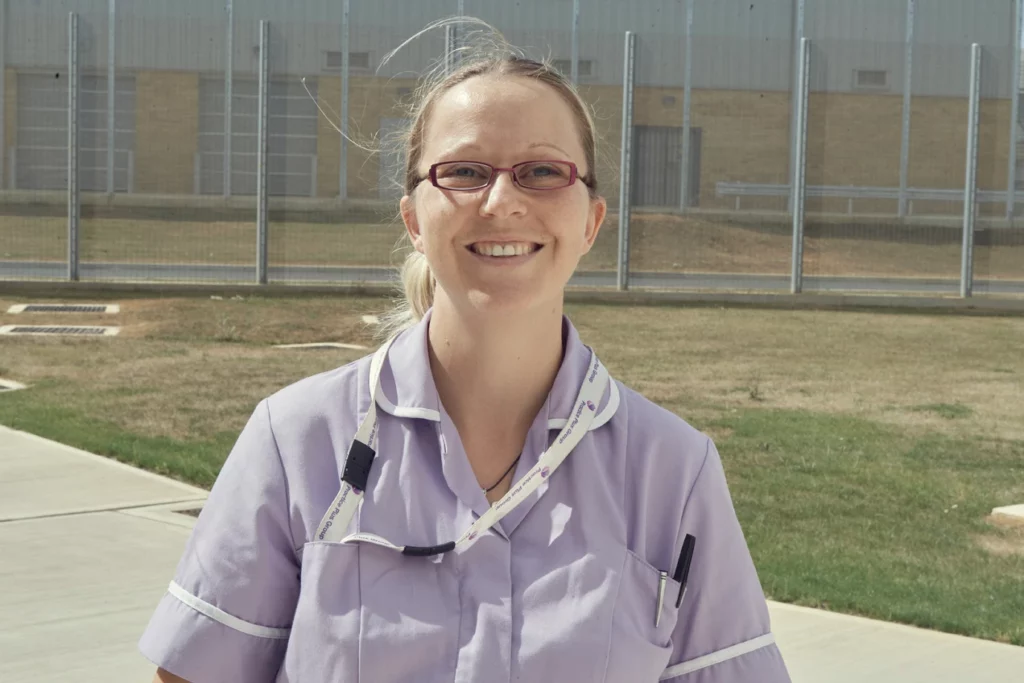Our unique wellbeing model
We’ve developed an innovative wellbeing model for use in prisons. This leaves behind the old disease-led models of healthcare to take a holistic approach.

We’ve developed an innovative wellbeing model for use in prisons. This leaves behind the old disease-led models of healthcare to take a holistic approach.

Our healthcare teams work with patients to create care plans based on the person’s relationships, mental health and wellbeing, their physical wellbeing, any substance misuse issues, as well as resettlement and re-offending.
In the past, an offender might only have come into contact with healthcare services when they had a crisis: for example an overdose, a psychotic episode or an asthma attack. The crisis would be resolved (usually using medication) only for them to disengage with healthcare services until they were forced back as the result of another crisis.
A patient might have anxiety problems, poor coping or social skills, all of which would have a knock-on effect on other aspects of their life and potentially lead them to seek alcohol or drug use as a means of relief and escape. Previously there was no attempt to encourage the patient to develop any self-awareness or understanding of the factors contributing to their behaviour or health.
With our model, patients are encouraged to take responsibility for, and control of, their own health and wellbeing. They work with our multidisciplinary teams to understand the deeper-seated issues and reasons behind their behaviour and the impact these have on their health. Working together, the patient and professional develop a personalised care plan based on goals they have identified themselves. Progress towards goals can be monitored by the individual, encouraging confidence in their ability to manage their own health and well- being. This personalised care plan is owned by the person and can be shared with whoever they choose, including prison and probation staff if they wish.
As their self-awareness develops and sense of empowerment increases, the person is less likely to use high intensity services and more likely to proactively get involved in ongoing lower level health and wellbeing programmes.
Traditionally, as a patient left one service, there was a chance that they would get lost in the system and not get the full range of care they needed. By offering integrated services, where different medical professionals work in an embedded way with one another, patients get the right treatment, at the right time by the right person.
Allowing people to ‘own’ their own personalised care plan and goals enables them to decide to share that information with others and increases the likelihood of information being passed on following release. Part of the process is to educate people around how to get the best out of services, what services are best to access under specific circumstances and when to access them. Involving patients at every stage of their care pathway gives them some control over their health and well-being. They become active, rather than passive, participants in health and wellbeing interventions.
Recovery has to take into account factors outside prison if a patient is going to experience positive reintegration back into the community. Working can be very beneficial to both mental and physical health. Patients work with support workers to identify training and employment options as well as negative and positive relationships with people in the outside world that should be avoided/developed.
Our approach uses a range of strategies, from peer support and stress management to the use of health trainers. We use a coaching model to help patients to understand the importance of complying with their prescribed medications while reducing/eliminating any use of illicit drugs to improve their health and manage any long term conditions they may have. Peer support in itself has far reaching potential in reducing reoffending and we’re continuing to develop this approach across our services.
Central to our model is the Wellbeing Wheel, a tool that charts the patients’ needs and progress against the five core domains (relationships, mental health and wellbeing, physical wellbeing, substance misuse, resettlement and re-offending). It uses a series of easy to understand questions that service users answer in order to score themselves.
The Wellbeing Wheel aims to improve a patient’s motivation to engage with health interventions because they’re able to identify personal goals and understand the steps needed to reach those goals. It’s also useful for helping clinicians to better understand a person’s priorities and motivations, and tailor responses and interventions accordingly.
The Wellbeing Wheel is owned by the patient and can be shared as part of their complete personalised care plan. It doesn’t need to contain any confidential information and can be used if a person is transferred to other prisons. On their release it can also act as a ‘health passport’ for the individual as they engage with social and health services.
We believe this tool has the potential to make a big impact on healthcare approaches and how services are used across the UK’s health in justice system. Used as part of our wider approach, we believe that it will enable patients to make full and lasting changes to their health and wellbeing that will affect the rest of their life.